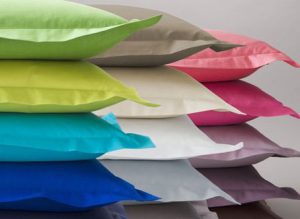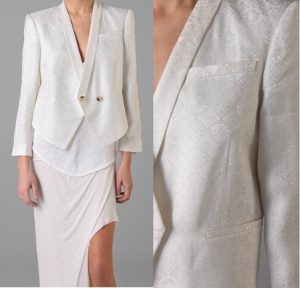Sateen as a fabric is very similar to satin; it is woven using similar techniques to satin however it is made using spun yarns compared to filaments which are very thin strands of plant or animal fibres.
Produced in the early 1900’s it was originally created by weaving cotton yarns with most of the threads facing one way to create a strong fabric with most of the yarns on one side, which gave the fabric strength, and a high sheen on the one side.
As production techniques and equipment has advanced with time so has the fabric and the qualities. The development of fabrics including sateen has involved the use of rayon. Rayon is a man made fibre mainly made from wood pulp the end result can imitate all natural fabrics including cotton, this is a type of sateen instead of cotton rayon is used.
Types of sateen
Cotton sateen:
Is the original type of sateen and is still used today due to the incredible qualities of cotton such as the strength and durability, allowing you to use it for many different applications. Some production techniques include the sateen to be mercerized. This is a process that involves the fabric being dipped in chemicals to smooth out little loops and bumps, but it is also to strengthen the cotton fibres and create a lustre finish similar to satin. This also ensures the fabric to be dyed with ease and perfection.
Cotton is combed through and worked on in a few different processes to create a lustrous yarn before going through the weaving process. This ensures the sateen to have a smooth feel but also have the sheen running through the fabric similar to satin.
The application for cotton sateen is common in the bed linen industry due to the durable aspect and easy dying process once mercerized. Cotton sateen once backed can be used to upholster furniture, cushions, curtains and other interior applications.
Rayon sateen:
Since the production of rayon it has made it easy to access more sateen that looks and feels like cotton sateen it can be difficult to tell by the eye unless you work very closely with the fabric. The qualities are very similar such as the durability aspect, the lustre and feel of the soft fabric.
Rayon sateen can be used for upholstery fabrics, cushion covers, bed linen and bedroom upholstery. Rayon sateen is mainly used for lining fabrics and can be used for upholstery like curtains with a backing to create a more structured look.
Sateen can be found to have a mix of different yarns mixed together to create a fabric with a sheen, however it is usually a mix of polyester or man made fibres that create a glossy finish.

Conclusion
The main difference between sateen and satin is the yarn or fibres it is made from, sateen is made mainly from cotton with some fabrics made from rayon which is pulp taken from wood. Satin is made from many different types of yarns and can be mixed yarn such as polyester and silk mix.
The sheen and texture is very similar to satin with washing instructions and aftercare, however cotton sateen is easy to care for and can be washed in the washing machine on a standard setting. Tumble-drying is ok but you should keep the spin cycle on a lower setting.
Rayon sateen is different with care, you should read the individual labels on the garment or fabric when purchasing as some rayon is made with a chemical coating to protect the fabric and with this you can wash as normal on a lower setting instead of having to get it dry cleaned.


